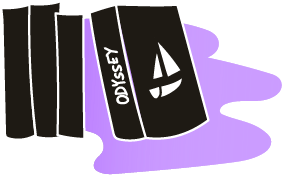Title of the resource
Title of the resource in english
Publisher
Focus Publishing/R Pullins & Co
Original language
Target and Age Group
Classical secondary school/ca, collegiate level, homeschoolers, teachers
Link to resource
Lingua latina per se illustrata
Accessed on 25 August, 2020
Author of the Entry:
Alessia Borriello, Bologna University, alessia.borriello2@studio.unibo.it
Peer-reviewer of the Entry:
Elżbieta Olechowska, University of Warsaw, elzbieta.olechowska@gmail.com
Second Peer-reviewer of the Entry:
Lisa Maurice, Bar-Ilan University, lisa.maurice@biu.ac.il
Hans Henning Ørberg
Hans Henning Ørberg (21 April 1920 – 17 February 2010) was a Danish linguist and teacher. He taught English, French and Latin at various Danish schools. From 1953 to 1961 he joined the staff of The Naturmetodens Sproginstitut, Copenaghen, where the "natural method" of learning languages was used. During these years, he created a new Latin course titled Lingua Latina secundum naturae rationem explicata, published in 1955, entirely written in Latin. To date, he is widely known for having written Lingua Latina per se illustrata, the final version of his course which was revised in 1983 and 1991. In his retirement, he ran the Domus Latina publishing house and gave lectures across Europe and United States about the natural method, to the point that nowadays the natural method is sometimes also referred to as the Ørberg method.
Source:
enacademic.com,
it.wikipedia.org
Contents & Purpose
Lingva Latina per se illvstrata is the only available textbook through which students can to learn Latin without having recourse to translation. The book is entirely written in Latin and it is made up of two parts: Familia romana (the basic course) and Roma aeterna (the advanced course). Both books include an extended contextual readings combined with a fully original apparatus of marginal notes, as well as pictures and illustrations. An additional exercise book entitled Exercitia Latina is also provided.
Part I, Familia romana comprehensively introduces students to the essentials of Latin grammar, as well as covers basic vocabulary of some 1500 words, thematically distributed through the book’s chapters. The tests consist of 35 chapters presenting a series of events in the life of a typical Roman family in the 2nd century CE.
Each chapter is divided into three sections: Lectiones, Grammatica Latina and Pensa. They are respectively: text pages, grammar lessons and exercises.
At the end of the book, there is a supplement consisting in an index of inflections, a Roman calendar and an Index Vocabolorum.
Part II, Roma Aeterna’s entire content is based on Roman history. The book starts with a description of the city of Rome using a prose version of Vergil’s Aeneid I-IV and Livy I combined with excerpts from Ovid. The somewhat adapted Livy’s text precedes excerpts of original Latin works by Livy, Aulus Gellius, Nepos, Sallust, Cicero, and Horace.
The title itself suggests the overall author’s approach: learning Latin per se clearly announces that students do not need translation. The contents as well as the grammar are made familiar through the context, illustrations, and notes provided by the author. The emphasis is on reading comprehension. To achieve this students must be fully engaged and attracted by an entertaining story, and so the book’s narrative is a page turner, similar to a novel in a modern language. Thus the natural method is geared towards transforming students into an audience and the author into a teaching storyteller. Ultimately, students advance step by step towards reading original Latin literature with the ultimate goal of learning Latin being full understanding and enjoyment.
The story told in both books is enriched by the addition of ancient myths, deities, and traditional characters meant to convey classical contents throughout the whole text and to entertain students.
The repeated practice of linguistic themes is ensured by the serial reframing of the narrative in which blocks of vocabulary and language structures are revisited again and again in order to familiarize students with them progressively. Classical myths and figures are inserted in the story often through digressions in the characters’ direct speeches, leading to a multilevel narrative.


